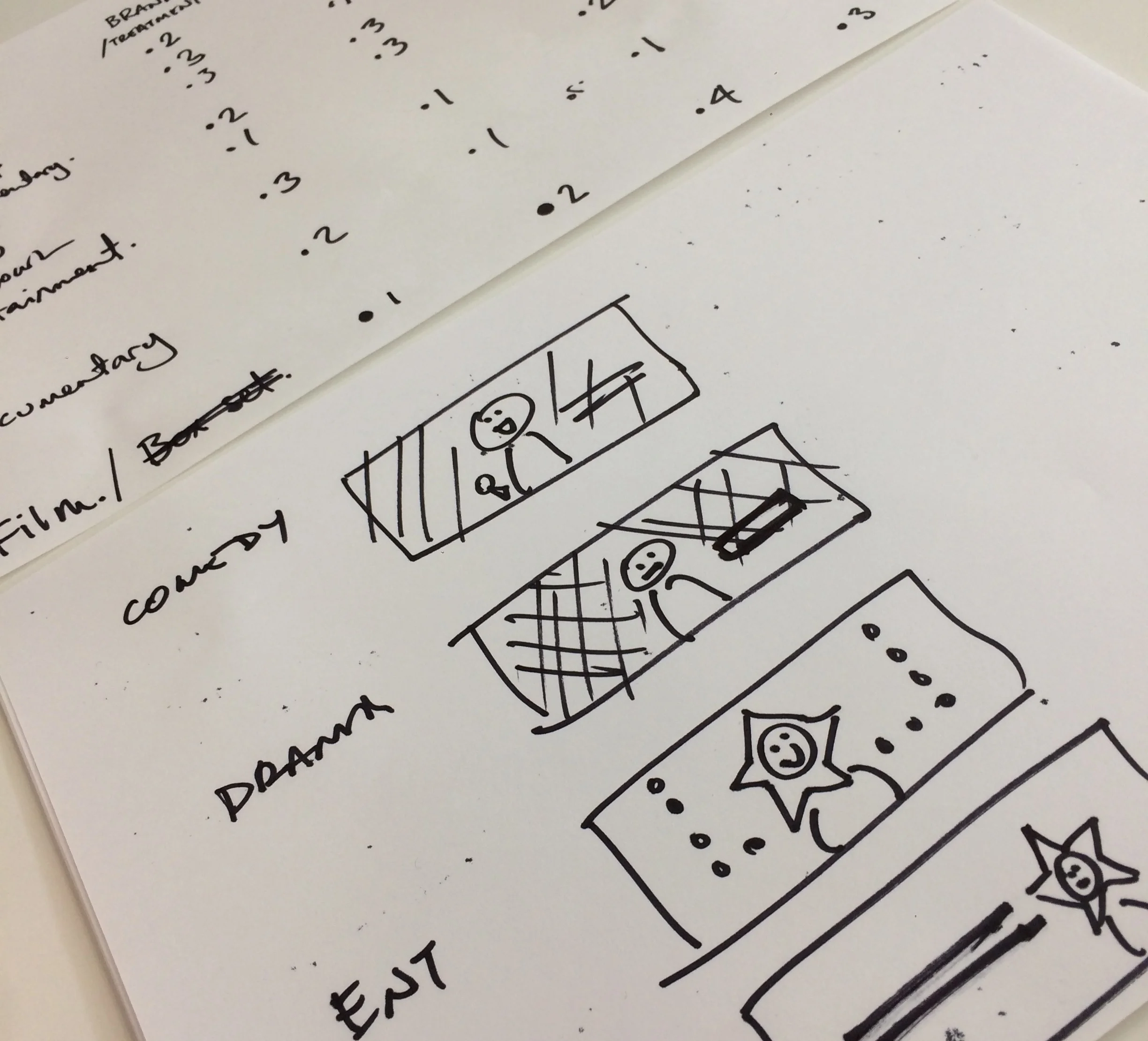BBC IPLAYER
Image Matrix
Brief
How can we communicate genre through an image?
Solution
Collaborating closely with Editorial and teams throughout the image delivery process we created a matrix which would not only help users intuitively identify the genre of an image at a glance but provide a common language and structure internally to improve the entire image production chain.
My Role
We had already defined through quant and qual research the image style that attracted our audience most. We wanted to go deeper than this, the goal was to ‘UX’ the picture creation process in order to provide a clear definition of each genre.
To do this we conducted an audit of iPlayer and our competitors, I looked at each genre and began to highlight any attributes that defined each.
The audit highlighted that alongside image treatment we could create an overall tone using four main attributes: Brand, Talent, Character and Context.
We then conducted a workshop with a mixture of UX and editorial. In this workshop we discovered that each genre benefitted from a unique prioritisation of attributes. Following this realisation we created an initial matrix that formed a framework around each genre.
We scheduled a session with the wider editorial team to gather their feedback. My senior designer and I pulled together a short deck to relay the audit and conclusions from the workshop. This was met with a great deal of enthusiasm and positivity.
With the initial approval from editorial we wanted to further test the matrix in a real situation. We constructed a workshop which would stress test the matrix through a range of activities.
Participants in the workshop were divided into three teams. Each team were asked to evaluate the provided asset images, select the image that they felt best represented the genre and programme. Each team then created an example of cover art for iPlayer.
For the first task each participant were given the same description and genre. All groups ended with a similar result, using bright colour to connote comedy, partnered with expressive facial expressions.
In the second task each group were given different genres and description and had to choose from the same assets. This highlighted it was possible to use the matrix to clearly define the genre using the same assets.
These exercises where a huge success and gave us a range of findings:
We as UX and editorial were already using these attributes unconsciously, however the matrix gives us a clear platform to communicate the design choices.
We are lacking in assets, what we are provided with isn’t always enough to create the right image.
The matrix can work in real life situations.
After stress testing we began to share with a wider audience, we started with BBC Pictures. Their team liaison with production companies and could therefore help us effect the image production chain from the beginning, using the matrix to lead conversations around assets, providing a common language.
Going beyond iPlayer we also presented the matrix around the wider BBC – to the Creative Directors. The aim here was to highlight if they were dealing with any of the same problems and begin to see how the matrix could flex and be used in each product.
I would later go on to work on an extension to the Matrix which would explore how it would apply to children, researching how the principles could change with age and wether they applied to our younger audiences.
Summary
The matrix is now being used by editorial to create images for iPlayer. The matrix has successfully incited change at the beginning of the image creation chain and has lead to an update in contract. Meaning that we get a range of more suitable assets, increasing quality substantially.
A/B tests where conducted, proving out the thinking behind the Matrix, results saw a huge up-lift in click throughs.
On top of this we worked to layer Bio-Aesthetic triggers on to the matrix to make each image even more intuitive for users.
The part I enjoyed most about this project was the cross discipline collaboration, using design thinking to effect change in a whole new area. It also highlighted the engagement that a hands on workshop can bring in order to get stakeholders on board.
Design thinking
Workshop preparation
Workshop facilitation
Present and communicate
Cross discipline collaboration
Competitor analysis
Visual design
Moodboards
Self initiated work & team work




